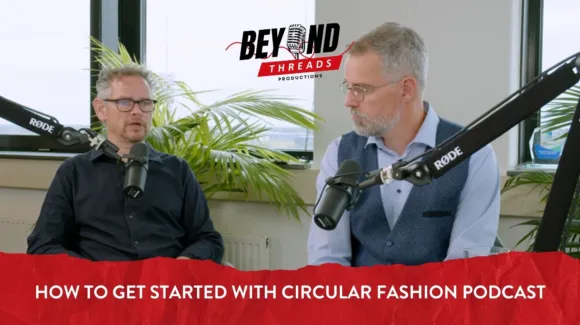Traditional ‘linear’ economic models have dominated business thinking for decades. And while these models excel at measuring outputs and financial transactions, they fail to account for hidden costs – such as resource depletion, waste management and supply chain vulnerabilities, which directly impact operational efficiency and profitability.
Circular economics presents a strategic alternative that’s becoming increasingly important for fashion and lifestyle brands to understand and leverage. Unlike traditional models, circular approaches can help to optimise resource utilisation, reduce waste-related costs and create more resilient supply chains.
In the latest episode of the Beyond Threads podcast, Bleckmann’s Erik Janssen Steenberg and Nicole Bassett discuss how fashion businesses can benefit from adopting a more circular mindset within their existing operations.
Rethinking economic models: From linear to circular
The transition from linear to circular economics represents a fundamental shift in how businesses conceptualise value creation and resource management. This paradigm moves beyond the conventional ‘take-make-waste’ framework, instead emphasising regenerative systems that prioritise resource efficiency and waste elimination.
As Nicole explains, “We have to start evolving our thinking about an economy that isn’t just about financial transactions but also considers environmental and social well-being. Businesses that embrace circularity will be well-positioned to thrive in this new paradigm.” Circularity can therefore be a valuable differentiator for forward-thinking fashion brands, as well as bringing a number of operational benefits.
Listen To Audio Only
Transforming cost centres into revenue streams
Indeed, implementing circular models can transform traditional cost centres into potential revenue streams. Where linear models simply view end-of-life products as waste that requires disposal, circular frameworks recognise these materials as valuable inputs for future production cycles. This creates opportunities for enhanced profit margins while reducing operational risks – not to mention regulatory ones.
First steps towards implementing circular frameworks
An increasing number of fashion brands are turning to circular models as a way to address mounting concerns around the environmental impact of fashion. But knowing where to start can be a challenge. Implementing circularity in fashion involves more than just product design; it also encompasses comprehensive lifecycle engagement strategies, such as take-back programmes, repair services and material recovery systems. Catch the next episode of the Beyond Threads podcast to find out more!
Ready to discover the business case for circular solutions in fashion? Press play on the Beyond Threads podcast to get the full story, or get in contact for a free consultation with a Bleckmann expert!
















